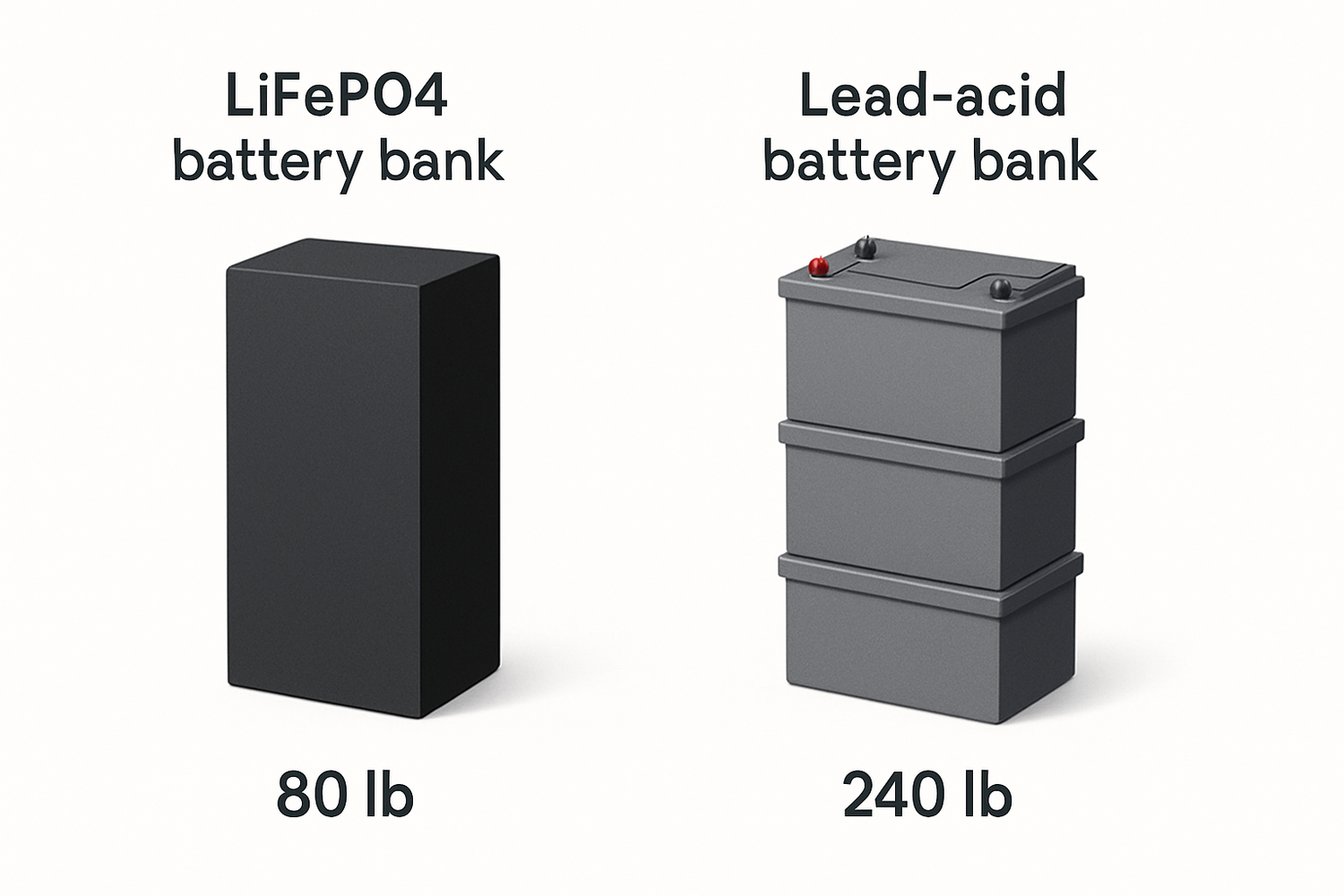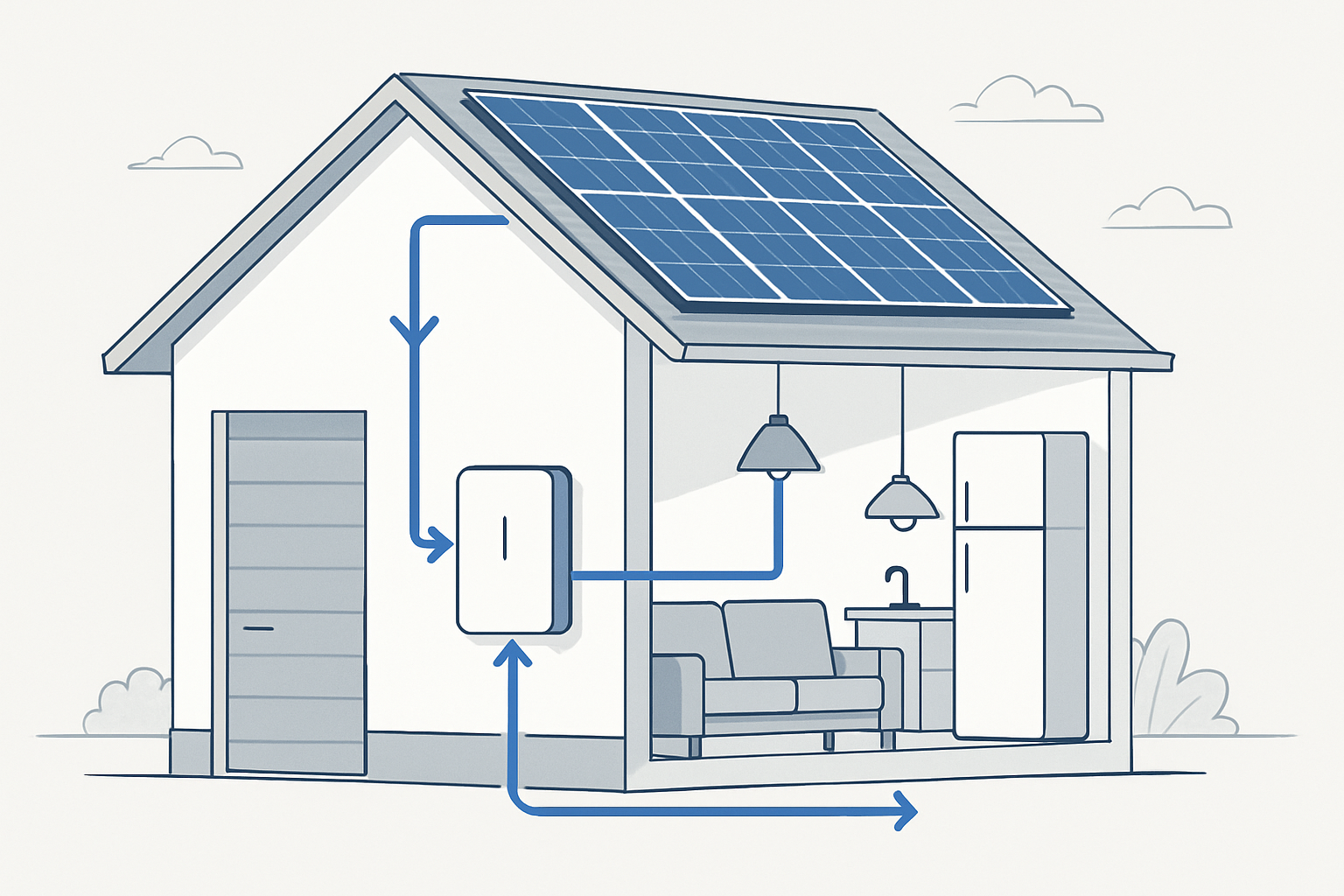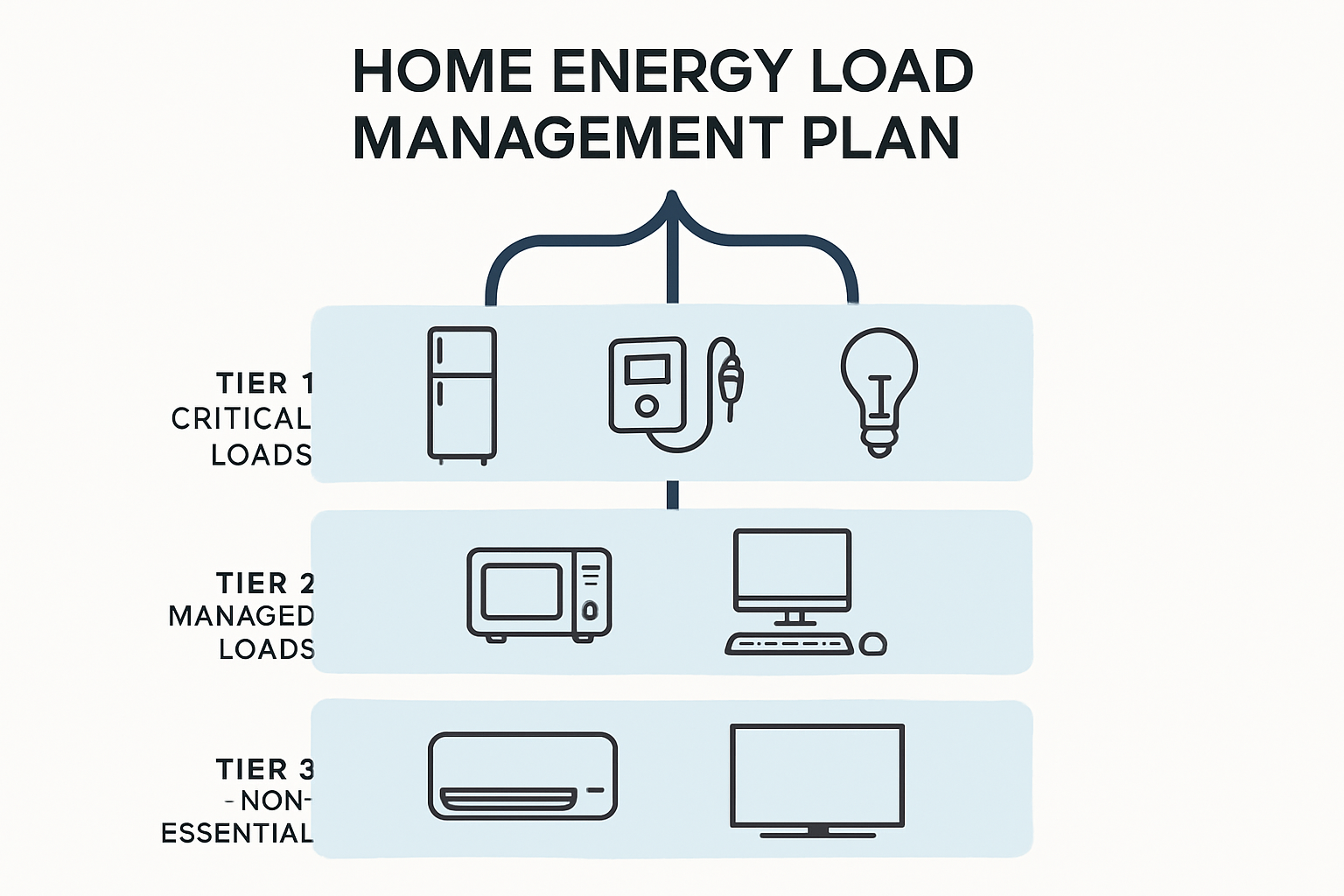When a power outage strikes, the reliability of your backup system is paramount. The battery bank is the heart of this system, and choosing the right technology is critical for ensuring you can power your essential loads. For years, lead-acid batteries were the standard. Today, Lithium Iron Phosphate (LiFePO4) technology presents a powerful alternative. This comparison focuses on the practical differences between LiFePO4 and lead-acid when sizing a system specifically to handle peak loads and maximize backup duration.
Understanding Core Chemical Differences
The nameplate capacity of a battery, measured in Amp-hours (Ah), can be misleading. How that capacity is delivered under real-world conditions is what truly matters. The underlying chemistry of LiFePO4 and lead-acid batteries dictates their performance, especially under the stress of heavy loads.
Usable Capacity and Depth of Discharge (DoD)
One of the most significant distinctions is the usable energy. A LiFePO4 battery can be regularly discharged to 80-90% of its rated capacity without significant degradation. In contrast, to preserve the lifespan of a lead-acid battery, it is recommended to limit discharges to 50% of its capacity. Discharging a lead-acid battery deeper than 50% drastically shortens its cycle life. This means a 100Ah LiFePO4 battery provides at least 80Ah of usable energy, while a 100Ah lead-acid battery only offers 50Ah. Consequently, to get the same usable energy, you need a much larger lead-acid battery bank.
Voltage Stability Under Load
When you power on a large appliance, it creates a significant electrical demand. LiFePO4 batteries maintain a remarkably stable voltage level throughout their discharge cycle, even under heavy loads. Lead-acid batteries experience significant 'voltage sag,' where the voltage drops sharply as the load increases and the battery drains. This drop can cause sensitive electronics to shut down or malfunction, even if the battery technically still has charge remaining.
Lifespan and Cycle Count
A battery's cycle life is the number of charge and discharge cycles it can endure before its capacity diminishes to a certain point. LiFePO4 batteries offer a vastly superior cycle life, typically rated for 2,000 to 5,000 cycles or more. Lead-acid batteries, on the other hand, typically last for only 200 to 500 cycles under similar conditions. This longevity makes LiFePO4 a more durable and reliable long-term investment for a critical backup system.
Sizing Your Battery Bank for Peak Loads
Correctly estimating battery backup capacity requires more than just looking at the Ah rating. You must account for how the battery chemistry performs under the specific peak loads of your home, a factor where lead-acid technology shows its limitations.
The Peukert Effect in Lead-Acid Batteries
A phenomenon known as Peukert's Law significantly impacts lead-acid batteries. This law, first formulated by German scientist W. Peukert in 1897, describes how a battery's available capacity decreases as the rate of discharge increases. In simple terms, the faster you pull power from a lead-acid battery, the less total energy you get out of it. If a 100Ah lead-acid battery is discharged with a heavy load over one hour, it might only deliver 60-70Ah of energy. LiFePO4 batteries are largely unaffected by this, delivering their full available capacity regardless of the discharge rate.
A Practical Sizing Comparison
Let's consider a scenario where a home needs to power 2,000 watts of critical loads for 4 hours during an outage. This requires 8,000 Watt-hours (Wh) of energy. We will compare the required battery bank size for a 48V system.
| Parameter | LiFePO4 Battery | Lead-Acid Battery |
|---|---|---|
| Energy Needed | 8,000 Wh | 8,000 Wh |
| Recommended DoD | 80% | 50% |
| Required Usable Capacity | 8,000 Wh | 8,000 Wh |
| Total Capacity (factoring DoD) | 10,000 Wh (8000 / 0.8) | 16,000 Wh (8000 / 0.5) |
| Impact of Peukert's Law | Negligible | Additional oversizing needed (~20-30%) |
| Adjusted Total Capacity | ~10,000 Wh | ~20,000 Wh |
| Capacity in Ah (at 48V) | ~208 Ah | ~417 Ah |
As the table illustrates, to reliably meet the same peak backup demand, the lead-acid battery bank needs to be roughly double the rated capacity of the LiFePO4 bank. This doesn't even account for the significant difference in physical size and weight, where LiFePO4 batteries are typically smaller and up to 55% lighter for the same capacity.
Performance Factors Beyond Capacity
Beyond the core sizing calculations, other performance metrics further differentiate the two technologies and impact their suitability for backup power.
Charge and Discharge Efficiency
Round-trip efficiency measures how much energy you get out versus how much you put in. LiFePO4 batteries have a very high efficiency of 92-98%. This means less energy is wasted as heat during charging and discharging. Lead-acid batteries are less efficient, with a round-trip efficiency of about 75-85%. This is especially important in solar energy storage systems, as higher efficiency means more of your generated solar power is stored and available for use. For a deeper analysis of these metrics, the ultimate reference on solar storage performance offers detailed comparisons.
Temperature Tolerance
Battery performance is sensitive to temperature. Lead-acid batteries suffer significant capacity loss in cold weather, potentially losing up to 50% of their capacity at 0°C. LiFePO4 batteries perform much better in a wider temperature range and experience only a minor capacity reduction (around 10%) in similar cold conditions.
Maintenance and Safety
LiFePO4 batteries are virtually maintenance-free. Flooded lead-acid batteries, however, require regular maintenance, including checking water levels and cleaning terminals to prevent corrosion. From a safety perspective, the chemistry of LiFePO4 is more stable, and a sealed LiFePO4 battery does not emit flammable hydrogen gas during charging, unlike flooded lead-acid batteries which require proper ventilation.
Making the Right Choice for Your Backup Needs
While traditional lead-acid batteries have a lower initial purchase price, sizing a system for peak backup duration reveals their limitations. To achieve the same level of performance and reliability as a LiFePO4 system, a lead-acid bank must be significantly oversized to account for its lower usable capacity, voltage sag, and the Peukert effect. Over the long term, the superior cycle life, higher efficiency, and maintenance-free operation of LiFePO4 batteries often result in a lower total cost of ownership and, more importantly, greater peace of mind when the power goes out. As the International Energy Agency notes in its The Role of Critical Minerals in Clean Energy Transitions report, the high energy density of lithium-ion technology has made it a vital piece of modern energy networks.
Frequently Asked Questions
Why do I need to oversize a lead-acid battery bank so much?
You must oversize a lead-acid battery bank for two main reasons. First, to prolong its life, you should only use about 50% of its rated capacity (Depth of Discharge). Second, Peukert's Law dictates that the battery's effective capacity decreases when you draw high currents to power large appliances. Sizing up compensates for both of these effects.
Can I use a LiFePO4 battery with my existing solar inverter designed for lead-acid?
Many modern solar inverters are compatible with multiple battery chemistries, including LiFePO4. However, it is crucial to check your inverter's specifications and ensure the charging parameters (like voltage and current) can be adjusted to match the requirements of the LiFePO4 battery. Using incorrect settings can damage the battery and affect performance.
Is the higher upfront cost of LiFePO4 worth it for backup power?
For many, the answer is yes. While the initial investment is higher, the total cost of ownership is often lower. This is because LiFePO4 batteries last up to 10 times longer, require no maintenance, are more efficient, and deliver better performance under peak loads. This translates to fewer replacements and more reliable power over the system's life.





Leave a comment
All comments are moderated before being published.
This site is protected by hCaptcha and the hCaptcha Privacy Policy and Terms of Service apply.